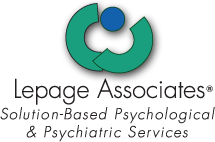Depression represents a significant mental health concern for children and adolescents. It is often associated with significant impairment in other areas of their lives as well including disruption in academic achievement, peer relationships, family functioning, and sense of self.
There are multiple contributing factors to adolescent depression that include, but are not limited to, genetic contributors, family discord, deficits in problem solving, social and coping skills, difficulty with emotional regulation, and environmental stressors.
Child and adolescent depression are frequently unrecognized because they accompany difficulties in other areas. More often, adults attend to poor grades, skipping school, increased arguments with parents, oppositional behavior, and anxiety that frequently accompany depression.
What to look for in your child or adolescent:
There are some differences in the presentation of depression in children, adolescents, and adults. In children and adolescents, irritability is more common than sad mood. As adolescents approach adulthood, the presence of a sad mood becomes more evident. When looking at children and adolescents, adolescents are more likely to show excessive sleep, hopelessness, lack of enjoyment in activities, sluggishness, and fewer physical complaints (i.e., stomachaches, headaches, etc.) than are children. Suicidal ideation is also rare in childhood and increases markedly during adolescence.
When you notice these traits in your child, it is important to seek professional help.
In the area of depression, prevention goes a long way. In taking preventative steps, you prepare your child with the tools to more effectively connect with others and regulate their own mood and environment. With treatment recovery rates are high.
Treatment often includes individual therapy to address skill building (social skills, coping skills, emotional regulation skills, and conflict resolution), family therapy to improve communication and parent-child relationship, and group therapy to enhance feelings of connectedness and self-esteem.
